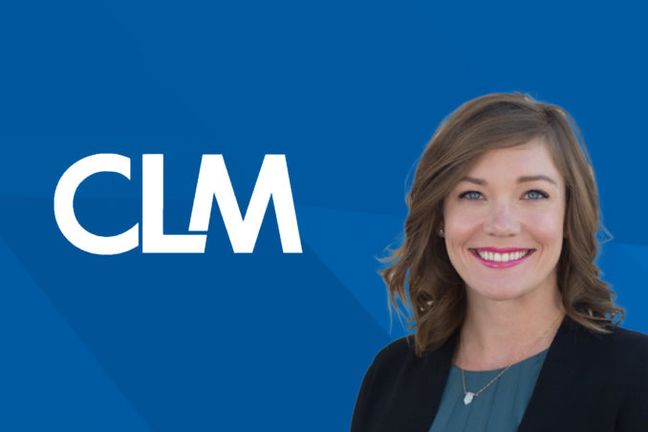In California, drivers can purchase “uninsured or underinsured motorist coverage” (“UCM”). If the driver is later injured in an automobile accident, and the at-fault party has no insurance (or insufficient insurance), then UCM coverage allows the injured driver to recover against his own insurance company.
When the injured party asserts a UCM claim, his insurance carrier is allowed to assert any defenses that would have otherwise been available to the tortfeasor. (Famers v. Hansel (1970) 12 Cal.App.3d 570, 572; and Rowe v. Farmers (1992) 7 Cal.App.4th 964, 967.) But, what happens when the tortfeasor injures the policyholder on purpose? For example, if the uninsured driver intentionally drives his car into the injured party, will the injured party’s UCM carrier have to reimburse him?
General Prohibition Against Coverage for “Willful Conduct”
The California Legislature has decided it is against public policy to allow an insurance company to insure against intentional conduct like assault. Insurance Code § 533 states in relevant part, “an insurer is not liable for a loss caused by the willful act of the insured . . .” (Id.) The “willful act” limitation on coverage appears in the Insurance Code and in the terms of most auto liability policies. The Civil Code includes a similar prohibition; it states, “all contract with have for their object, directly or indirectly, to exempt anyone from responsibility for . . . willful injury to the person or property of another . . . [is] against the policy of the law.” (Cal.Civ.Code § 1668.) In practice, this means insurance companies are not allowed to indemnify insureds who willfully injure another. (Safeco Inc. v. Robert A. (2001) Cal.4th 758, 67.)
In order to be considered “willful” under Ins. C. § 588, there must be more than a negligent touching. (Horace Mann v. Barbara B (1993) 4 Cal.4th 1076, 1085.) Likewise, gross negligence is not excluded as a “willful act.” (See e.g. Interinsurance Exch. V. Flores (1996) 45 Cal.App.4th 661, 672 [ruling that drunk driving is not “willful conduct.”) An act is considered “willful” if it is: 1) done deliberately for the express purpose of causing damage or intentionally performed with knowledge that damage is highly probable, or 2) if the harm is inherent in the act itself. (Downey Venture v. LMI (1998) 66 Cal.App.4th 478, 500.) An act with the preconceived design to injure another is clearly “willful.” (Clemmer v. Hartford (1978) 22 Cal.3d 865, 887.)
Under this test, an insurer would not owe coverage to an insured who intentionally drove his vehicle into another person. This is because such an act would be performed with the preconceived design to injure another. (Id.)
But, what if an uninsured party intentionally drives his vehicle into someone with UMC coverage? Would an insurer have to reimburse its own insured for another party’s intentional assault?
UCM Coverage for Willful Misconduct
Uninsured motorist coverage (UMC) is not liability without fault. Rather, the insurer is liable only for such sums as its insured “shall be legally entitled to recover . . . from the owner or operator of an uninsured motor vehicle.” (Ins. C. § 11580.2(a)(1).) This language, coupled with the prohibition against coverage for willful misconduct codified in Cal.Ins.C. § 533, frames the opposing policies behind our inquiry – i.e. whether an insurer has a duty to indemnify a UMC claimant injured by a third party’s assault. This issue is, at least tangentially, addressed in a scant number of appellate decisions.
In the case of American Nat’l Pro. V. Julie R. (1999) 76 Cal.App.4th, an insured party was raped by the uninsured driver of a car in which she was a passenger. The court determined there was no UMC coverage because the vehicle was merely the situs of the rape and not a “substantial factor” in inflicting injury. (Id. at 138.) While the majority opinion in Julie R. does not address the bar to coverage based on exclusion of willful acts, the dissenting opinion notes that the narrow “substantial factor” issue presented precluded the court from addressing whether there is UMC coverage for an intentional tort (like rape). The dissent acknowledges numerous decisions describe UMC coverage as being identical to what the injured party would have if the tortfeasor had insurance covering the incident. (Id. citing to Famers v. Hansel (1970) 12 Cal.App.3d 570, 572; and Rowe v. Farmers (1992) 7 Cal.App.4th 964, 967.) The dissent, however, also noted a case where UMC coverage did apply to intentional conduct. (Id. citing to National American Inc. v. INA (1977) 74 Cal.App.3d 565, 571 [where the court found UMC coverage for eggs thrown at a pedestrian from a moving vehicle].) The dissent does not offer a conclusion, but rather notes “in an action against a third party tortfeasor, Ins. C. § 533, which bars coverage for willful acts, may be a defense to the carrier.” (Id.) [Emphasis added.]
In the National American Inc. v. INA case cited to by the Julie R. dissent, the court did not actually address the issue of willful conduct excluding coverage. In the underlying National American Inc. case, four teenage boys threw eggs from a moving vehicle and struck a pedestrian, causing him to lose sight in one eye. The trial court returned a verdict against the egg-thrower, Mr. Perry, but not against the other three boys. Mr. Perry was an additional insured under INA’s automobile policy. National American Inc. held a homeowner’s policy in favor of one of the other teenage boys. INA filed a declaratory relief action to determine its, as opposed to National American’s, obligation to pay the jury award. INA argued injury did not occur from the use of the insured vehicle, and so was not covered by the automobile policy. The appellate court disagreed, ruling the injury arose “out of (his) use” of the automobile, meaning INA owed coverage. (Id. at 570 and 577.) Nowhere does this appellate decision address a “willful conduct” defense or Ins. C. § 533. In other words, the decision never actually addresses the topic.
The case of Cal. Auto Ins. Co. v. Hogan (2003) 112 Cal.App.4th 1292 indirectly tackles the issue. Here, Mr. Hogan was involved in a minor traffic accident with Mr. Lionetti. The parties pulled over and Mr. Lionetti became belligerent, eventually striking Mr. Hogan. Mr. Lionetti knocked out Mr. Hogan, causing him to fall on the back of his head. Mr. Hogan died five days later as a result of the head injury. In the subsequent declaratory relief action, the trial court granted Mr. Hogan’s UMC carrier’s summary judgment motion. The trial court found UMC coverage was not available because the injury did not “arise out of” the tortfeasor’s use of the uninsured vehicle. The appellate court affirmed. Again, the court did not directly address the “willful act” defense since it denied coverage based on the “arising out of” or “substantial factor” defense. The appellate court did, however, raise the issue when it stated, “Public policy supports indemnification for harm brought about by the operation of uninsured vehicles. [Citation.] On the other hand, public policy also prohibits insurance coverage for willful and criminal acts.” (Id. at 1304 citing to Civ. Code § 1668; Ins. Code § 533; and Mullen v. Glens Falls Ins. (1977) 73 Cal.App.3d 163, 169.) At least here the court recognized the conflicting public policies driving the matter.
Conclusion
The issue places two recognized public policies in conflict. On one hand, the state promotes the public policy of indemnifying harm caused by operation of an uninsured motorist. (See Ins. C. § 11580.2; and Farmers v. Hansel (1970) 12 Cal.App.3d 570, 573.) On the other hand, the state prohibits indemnification for willful acts. (Cal.Ins.C. § 533; and Cal.Civ.Code § 1668.)
Unfortunately, there are no appellate opinions directly addressing the issue. Rather, our sole guidance on the issue comes from passing recognition of the quandary in select few decisions. Until litigants raise the issue directly before the appellate court, insurers are relegated to the lacking guidance described above.

 Author: Jacob Felderman
Author: Jacob Felderman
 Cayce Lynch Weighs In: What Technology Solutions Are Effective When Handling Catastrophes?
Cayce Lynch Weighs In: What Technology Solutions Are Effective When Handling Catastrophes?
 Asian American & Pacific Islander Heritage Month Spotlight: Sitar Bhatt
Asian American & Pacific Islander Heritage Month Spotlight: Sitar Bhatt
 Women’s History Month Spotlight: Lynn Allen
Women’s History Month Spotlight: Lynn Allen
 Women’s History Month Spotlight: Kristi Blackwell
Women’s History Month Spotlight: Kristi Blackwell
 Women’s History Month Spotlight: Brooke Park
Women’s History Month Spotlight: Brooke Park
 Black History Month Spotlight: Chris Campbell
Black History Month Spotlight: Chris Campbell
 Are Security Deposits “Property” in Washington?
Are Security Deposits “Property” in Washington?
 How Tyson & Mendes Builds a Powerful Team With a Healthy Work-Life Integration
How Tyson & Mendes Builds a Powerful Team With a Healthy Work-Life Integration
 Our Unique Benefits Package Enables Our Attorneys to Thrive
Our Unique Benefits Package Enables Our Attorneys to Thrive
 Dram Shop Wrongful Death Damage: Which Damages Cap Prevails?
Dram Shop Wrongful Death Damage: Which Damages Cap Prevails?
 An Overview of Common Personal Injury Damages in Colorado
An Overview of Common Personal Injury Damages in Colorado
 When is a Leaky Roof No Longer the Roofer’s Problem? Application of Colorado’s Construction Defect Statute of Repose
When is a Leaky Roof No Longer the Roofer’s Problem? Application of Colorado’s Construction Defect Statute of Repose
 DEFENDING A SELF-EMPLOYED PLAINTIFF’S LOST INCOME CLAIM: ARE PERSONAL TAX RETURNS DISCOVERABLE IN CALIFORNIA?
DEFENDING A SELF-EMPLOYED PLAINTIFF’S LOST INCOME CLAIM: ARE PERSONAL TAX RETURNS DISCOVERABLE IN CALIFORNIA?
 Can an Employer Be Held Liable for an Off-Duty Employee’s Tortious Conduct?
Can an Employer Be Held Liable for an Off-Duty Employee’s Tortious Conduct?
 When is a Landowner Liable for a Sidewalk-Related Injury?
When is a Landowner Liable for a Sidewalk-Related Injury?
 Can California Taxpayers Recover Interest Via Negligent Tax Preparation Claim?
Can California Taxpayers Recover Interest Via Negligent Tax Preparation Claim?
 CAN SURGICAL DEVICE PERSONAL INJURY PLAINTIFFS AVOID FEDERAL PREEMPTION BY MAKING A FALSE ADVERTISING CLAIM?
CAN SURGICAL DEVICE PERSONAL INJURY PLAINTIFFS AVOID FEDERAL PREEMPTION BY MAKING A FALSE ADVERTISING CLAIM?